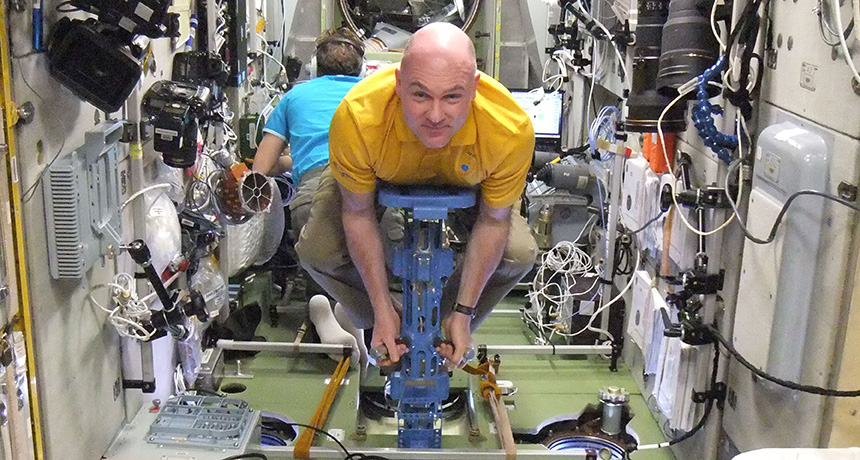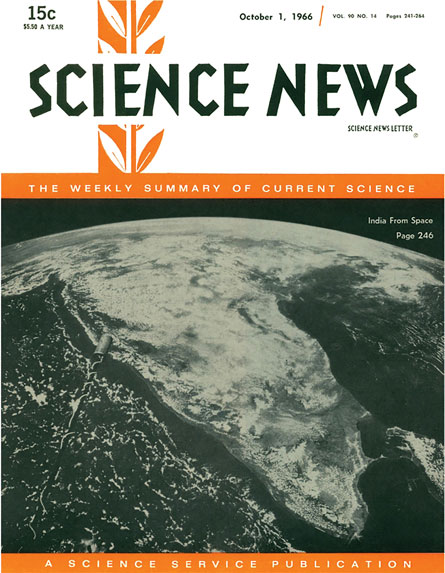Old-school contraptions still work for weighing astronauts
Without gravity, measurement relies on body’s effect on mechanical oscillations

SPACE BOUNCE Aboard the International Space Station, astronaut Andre Kuipers measures his weight using the pogo-stick-like Body Mass Measurement Device, which uses spring oscillations to determine mass.
NASA
 New method to measure mass in space devised — A scale for measuring weight in space that does not depend upon the attraction of gravity has been devised…. In [William Thornton’s] method, the weight of the mass is determined [by] mechanically oscillating a weight in a tray. The heavier the mass, the slower the oscillation rate. The scale is tied to an electronic unit measuring the time required for five cycles of oscillation. A reference to a chart gives the mass’s weight. —
New method to measure mass in space devised — A scale for measuring weight in space that does not depend upon the attraction of gravity has been devised…. In [William Thornton’s] method, the weight of the mass is determined [by] mechanically oscillating a weight in a tray. The heavier the mass, the slower the oscillation rate. The scale is tied to an electronic unit measuring the time required for five cycles of oscillation. A reference to a chart gives the mass’s weight. — 






